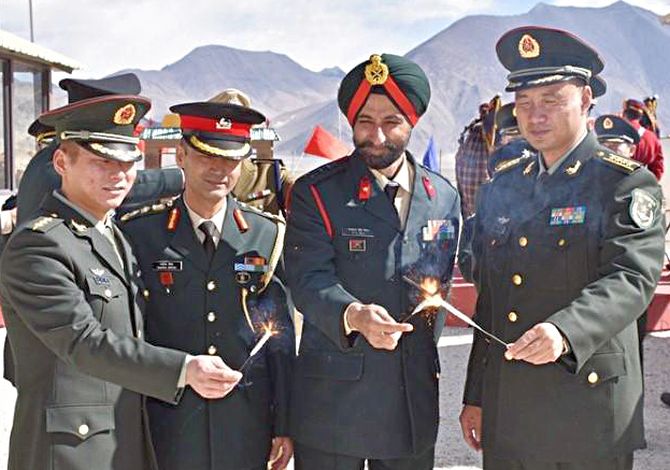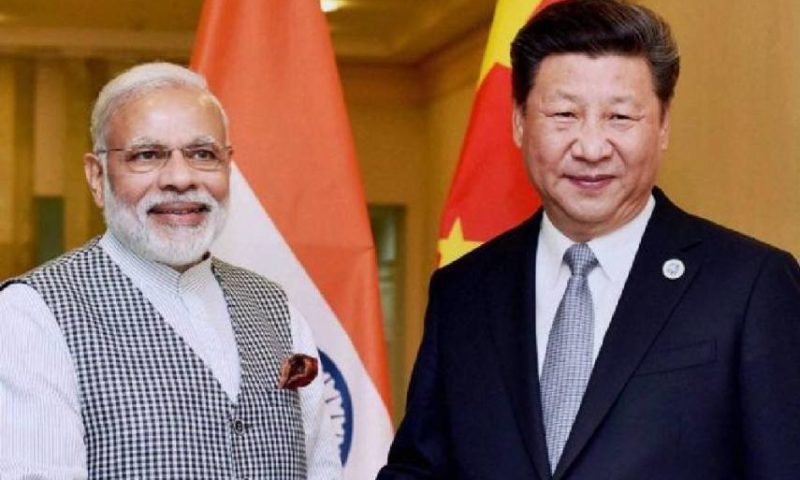By Spy Uganda correspondent
Beijing: After decades of protracted border disputes between China and India, both countries have reached a consensus to disengage all hostilities sparked off by the dispute over the Ladakh border.
Earlier, clashes between India and China had erupted in the small disputed area where the Indian region of Ladakh borders China’s Aksai Chin region.
Talks between India and China on 22 June 2020 were held at Moldo in a cordial, positive and constructive atmosphere, and finished with a mutual consensus to disengage.
India and China, two nuclear-armed Asian neighbours, are in a tense diplomatic and military standoff following their first deadly border clash in more than 40 years.
The June 15 incident in the disputed Galwan Valley, an arid Himalayan area along the Line of Actual Control (LAC), the de facto border between the two nations, left 20 Indian soldiers dead. China has yet to officially declare its casualties.

Indian and Chinese troops have been engaged in the standoff since early May at several points along the 3,500km (2,200-mile) LAC, most of which remains undemarcated.
The heightened tensions between the world’s two most populous countries have drawn international concerns, with the United Nations urging both sides “to exercise maximum restraint”.
Here are five things you need to know about the dispute:
What happened on June 15?
The fighting on June 15 was triggered by a disagreement over two Chinese tents and observation towers that Indian officials said had been built on its side of the LAC.
Chinese troops breached the Line to set up temporary “structures” in the Galwan Valley even after military officials had reached an agreement on June 6 to de-escalate, Indian Foreign Minister Subrahmanyam Jaishankar told China’s senior diplomat, Wang Yi, in a phone call.
The problem arose when an Indian patrol visited the area near a ridge to verify a Chinese assertion that its troops had moved back from the LAC, two government sources told Reuters news agency.
The Chinese troops had thinned out, leaving behind two tents and small observation posts, which the Indian party demolished, the sources said.
A large group of Chinese soldiers arrived and confronted the Indian troops. It was not clear what happened next, but the two sides soon clashed, the Chinese soldiers reportedly used iron rods and batons with spikes, killing 20 Indian soldiers and wounding dozens of others.
China has not said anything about any losses in the hand-to-hand combat.
On Sunday, V K Singh, Indian federal minister for roads and transport and a former army chief, claimed China lost at least 40 soldiers in the clash, without providing any evidence.
China’s state-controlled Global Times said there had been Chinese casualties, but did not elaborate.
Why Did The Clash Happen?
Experts mainly cite two reasons for the deadliest clash since 1975.
A major reason, according to some experts, is linked to India’s unilateral move last year to repeal Article 370 of the Indian constitution, which had guaranteed a measure of autonomy to the former Jammu and Kashmir state, which also included the disputed areas in Ladakh region.
China, which, like Pakistan, saw India’s move as unilaterally affecting its territory, strongly denounced the move at the UN Security Council last year.
Analysts also believe the current standoff is also a result of China’s pushback against India’s recent construction of infrastructure in border areas.
India inaugurated the 255km (158-mile) Darbuk-Shyok-Daulat Beg Oldie (DSDBO) road, built along the LAC, last year. China objected, seeing the move as a threat to its interests in the region.
China’s economic corridor to Pakistan and Central Asia passes through Karakoram, which is close to Galwan Valley, the site of the June 15 clash. Galwan Valley is close to Aksai Chin Plateau, which is under Chinese control but claimed by India.
According to Happymon Jacob, professor of international relations at New Delhi-based Jawaharlal Nehru University, China considers the Ladakh region crucial for its “access to Central Asia and CPEC project with Pakistan in which they [China] have invested billions of dollars [about $60bn].”
What is each side claiming?
Chinese foreign ministry spokesman Zhao Lijian said he was unaware of the specifics but that the Indian army had crossed into Chinese territory in several places in recent days – violating the agreement reached on June 6 – and that they should withdraw.
Calling it a “deliberate provocation” on New Delhi’s part, Zhao said: “The rights and wrongs… are very clear and the responsibility rests entirely with the Indian side.”
In response, India’s foreign ministry spokesman Anurag Srivastava cautioned China against making “exaggerated and untenable claims” on the sovereignty of the Galwan Valley area.
India says China occupies 38,000 sq km (15,000 square miles) of its territory in the Aksai Chin Plateau in the Himalayas, with 12,000 Chinese soldiers reportedly pushing across the border.
Last week, India’s Prime Minister Narendra Modi categorically refuted claims of China’s takeover of any Indian territory – his statement contrasting with the government’s earlier claims.
Modi’s denial of a Chinese incursion triggered a controversy, with opposition leaders accusing the government of intelligence failures and asking why the clash happened in the first place.




